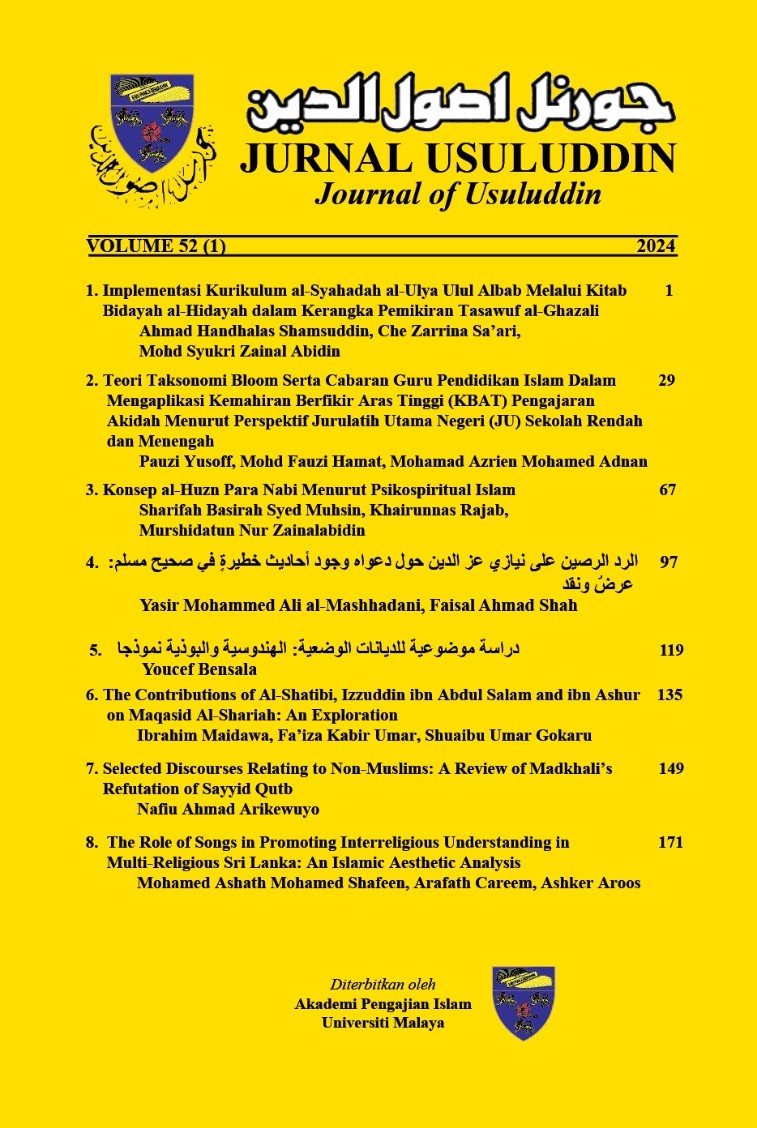The Role of Songs in Promoting Interreligious Understanding in Multi-Religious Sri Lanka: An Islamic Aesthetic Analysis
Main Article Content
Abstract
The paper has chiefly examined the vitality of the aesthetic expression of the song and music to promote inter-religious understanding among multiple faith traditions that exist in Sri Lanka from an Islamic aesthetic point of view. It can be observed that there is a growing debate among scholars concerning the contributions of the expression of aesthetic aspects of human beings, especially song, and music, and their use of them for the harmonious relationships among the divergent communities of the nation of Sri Lanka. This entails a thorough study of whether the song and music can be utilized for that purpose from the Islamic aesthetic point of view. Against this backdrop, this study sought to investigate and explain how an effective song and music can be used to promote coexistence and interreligious understanding, especially among Muslims and Buddhists in Sri Lanka. This study used the qualitative research method relying on the library to collect the data from relevant literature on the subject and employed content analysis. The findings show that Islam is in a positive position in terms of using songs with music to promote peace and social harmony but with some restrictions. This also suggested optimising the aesthetic instruments in connection with other communities within the Shariah compliance. This study can be useful for decision-makers, educators, and religious figures who are dedicated to fostering interreligious harmony and minimising conflicts in Sri Lanka and other countries.
